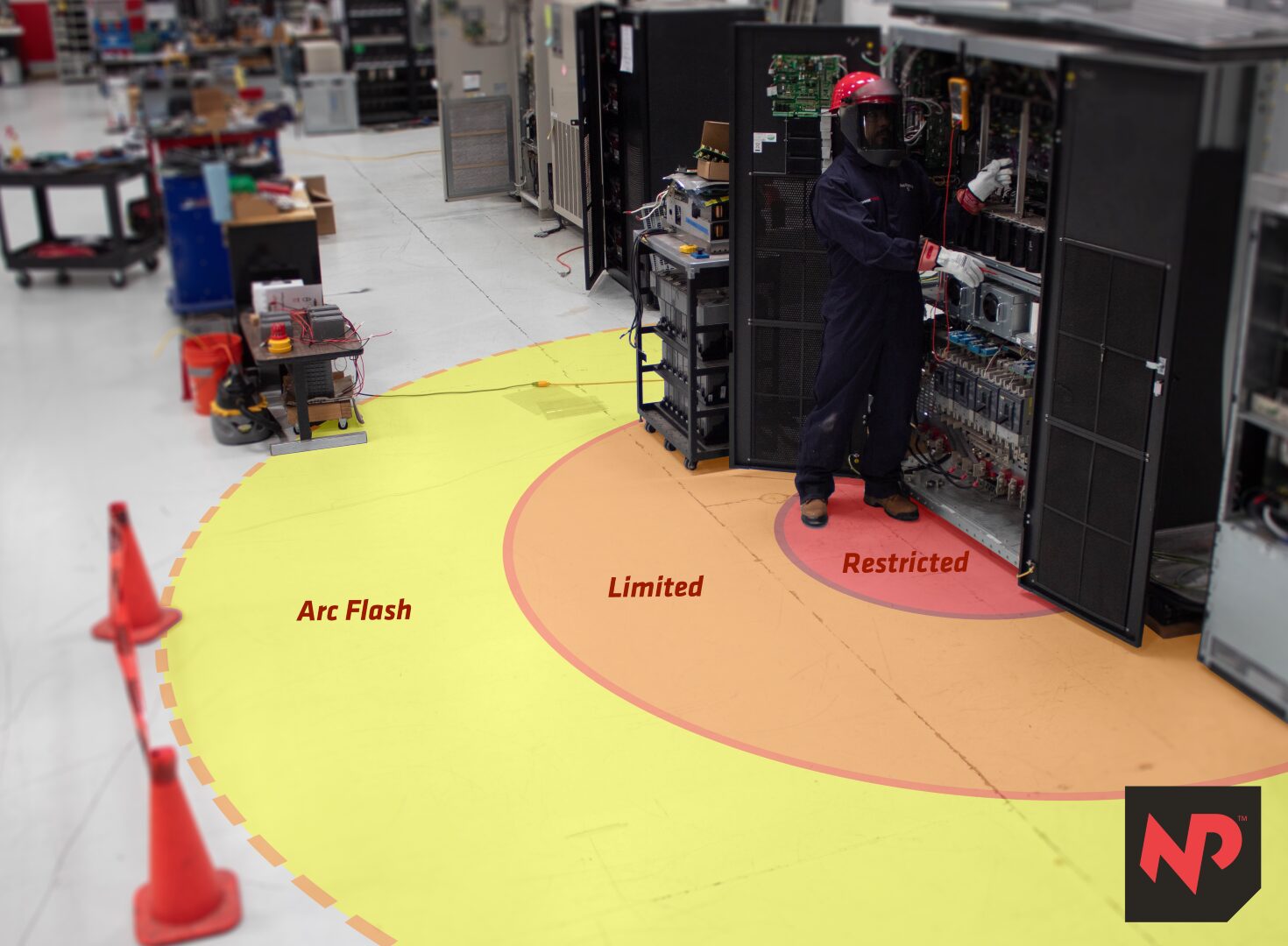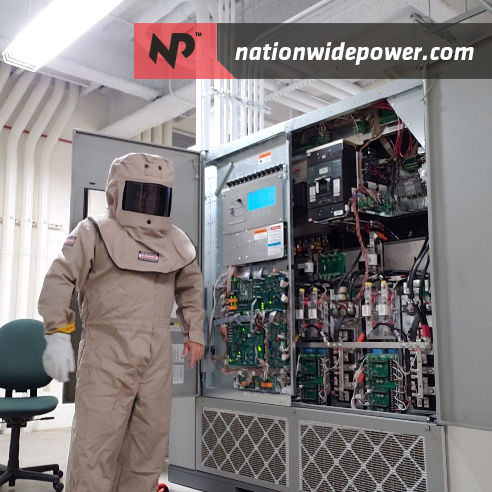

Due to its highly dangerous outcome, the term ‘arc flash’ is widely recognized within the
electrical industry as a hazardous event that must be prevented. A search in the Occupational
Safety and Health Administration (OSHA) accident report database reveals over 1,400 incidents
related to arc flash in recent years, many of which have resulted in serious injuries or fatalities.
An arc flash is a sudden and intense release of electrical energy that occurs when electricity
deviates from its intended path and arcs through the air to an unintended conductor. An arc
flash produces a powerful burst of heat, light, and sound, posing a significant hazard to
personnel in the vicinity. Given the potentially fatal consequences of an arc-flash incident,
complying with the National Fire Protection Association (NFPA) and establishing safe working
distances around exposed live electrical conductors is critical for minimizing risk, preventing
severe injuries, and ultimately saving lives.
To fully understand the severity of arc flash hazards, it is important to examine the
associated risks. Among the most significant are severe burn injuries. Arc flash events can
reach temperatures as high as 35,000 degrees Fahrenheit, hot enough to vaporize metal. The
impact on human senses can be devastating, with extreme light intensity and sound pressure
levels far exceeding safe exposure limits. These conditions can result in temporary or even
permanent blindness and hearing loss. Additionally, the superheated air generated by an arc
flash can cause serious respiratory injuries, including airway damage. Furthermore, smoke
inhalation from the combustion of materials present becomes a risk factor. Fortunately, the
NFPA provides clearly defined safe working distances. When properly followed, these
guidelines play an important role in mitigating the dangers associated with arc flash incidents.

To help assess and manage the risk of electrical hazards based on proximity to exposed
energized conductors, the NFPA-70E standard outlines specific Boundaries for both AC and DC
voltage systems. At the highest level of risk is the Restricted Approach Boundary. Entry into this
zone is limited to qualified personnel who are trained and equipped with the appropriate
personal protective equipment (PPE). This area presents the greatest potential for electric
shock, and unqualified individuals must not enter under any circumstances. While the boundary
may be just a few feet for lower voltages, it increases proportionally with higher voltage levels.
Beyond this is the Limited Approach Boundary, where the risk of electric shock remains.
Unqualified workers may enter this area only under the direct supervision of a qualified
individual. Although this boundary is set at a greater distance than the restricted zone, it still
poses significant hazards and must be treated with caution. The last zone is the Arc Flash
Boundary. This boundary defines the distance at which a person without adequate PPE could
sustain a second-degree burn in the event of an arc flash. Such burns are comparable to
touching a surface of 140 degrees Fahrenheit for 3 seconds, often resulting in blistering and
intense pain. The Arc Flash Boundary is a critical safety threshold and must always be
respected. Whenever there is a potential for arc flash, it is important to consult the NFPA-70E
Electric Shock Protection Approach Boundaries table to determine safe working distances.
In closing, the potentially fatal consequences of arc flash incidents highlight the critical
importance of adhering to the NFPA’s prescribed safe working distances around exposed live
electrical conductors. As Benjamin Franklin once said, “An ounce of prevention is worth a pound
of cure”. When maintenance or inspection requires access to energized components, strict
compliance with these guidelines is essential to minimizing risk, preventing serious injuries, and
ensuring the safety of personnel in electrical work environments.
Written By:
David Paiz
Training and Technical Support Manager
Environmental, Health, and Safety

